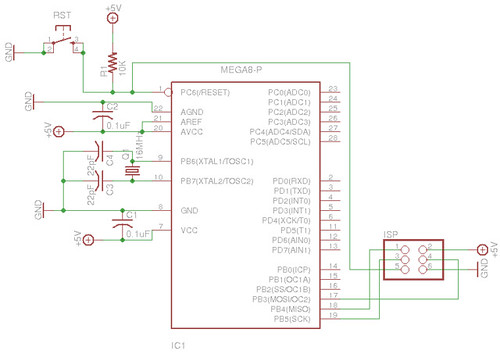- Tue Dec 30, 2008 1:22 pm
#62324
Are there any schematics / guides on how to wire up an arduino's atmega168 chip? I have some projects that i want to make permanent and solder them to some pcbs
http://hcgilje.wordpress.com/resources/ ... tandalone/
something like that are there guides that show how to do it with a resonator, and a crystal?
http://hcgilje.wordpress.com/resources/ ... tandalone/
something like that are there guides that show how to do it with a resonator, and a crystal?

